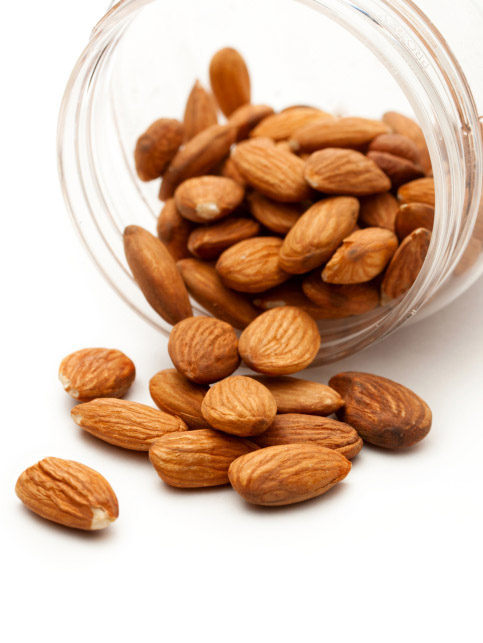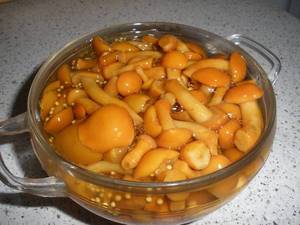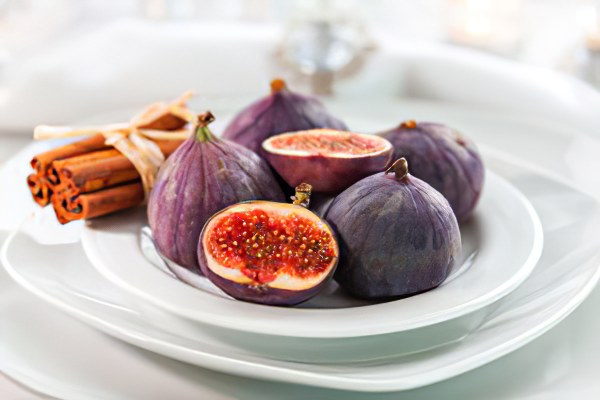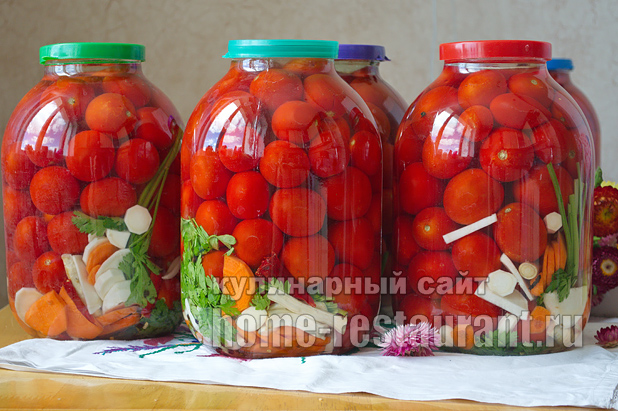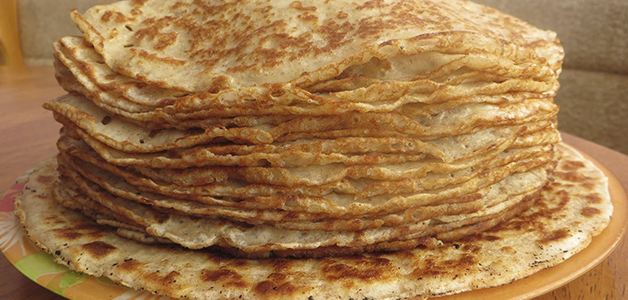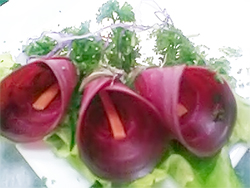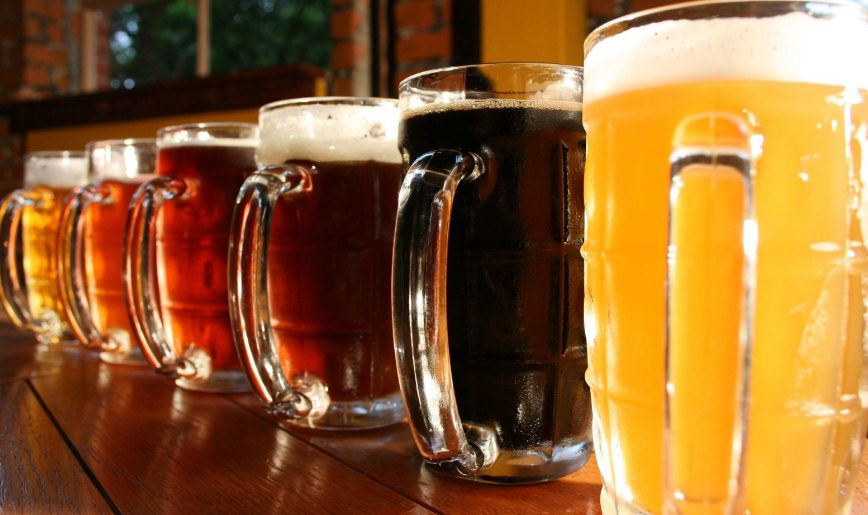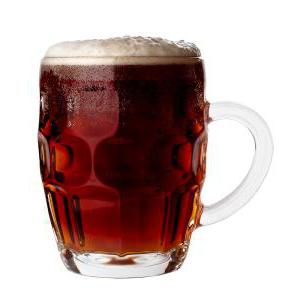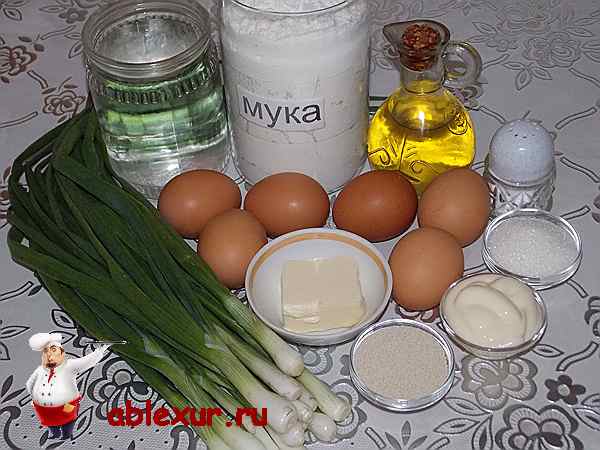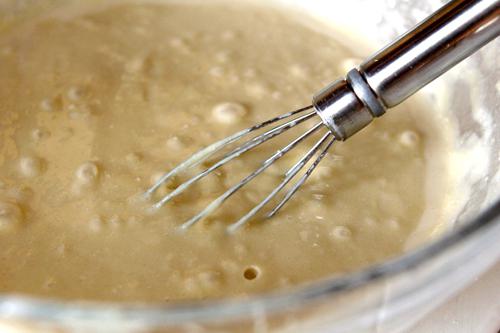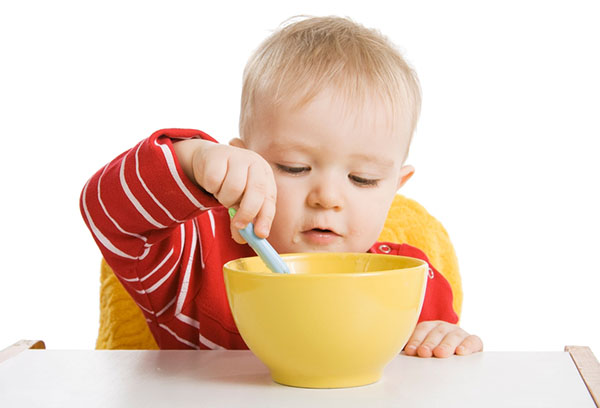Simple recipes for winter salting mushrooms in the hot and cold way at home. Salted mushrooms
Ecology of consumption. Food and recipes: Pour a layer of salt at the bottom of wooden or ceramic dishes, put half the leaves of currant, cherry, horseradish and 1 dill umbrella ...
1. Salting mushrooms - a cold way
INGREDIENTS:
● mushrooms (saffron mushrooms, black and white mushrooms, traps, russula) - 1 kg
● salt - 100 g
● currant - 10-12 leaves
● cherry - 5-6 leaves
● horseradish - 2 sheets
● dill - 2 umbrellas
● bay leaf - 2-3 pcs.
● peppercorns - to taste
● garlic - to taste
PREPARATION:
Wash and load breast mushrooms, rusks or russula with cold water for 5–6 hours (the saffron milk is not soaked, but only washed). At the bottom of wooden or ceramic dishes, pour a layer of salt, put half the leaves of currant, cherry, horseradish and 1 dill umbrella. Lay mushrooms in rows, sprinkling each layer with salt, pepper, garlic and bay leaf.
Put the remaining leaves on top, cover with a clean cloth, then a cutting board or plate and put oppression (after 1–2 days, the mushrooms will settle and give juice. If they secrete a little brine, increase oppression). The fabric needs to be rinsed from time to time. Mushrooms will be ready in 30–40 days. After that, they must be rearranged in a cold place.
2. Caviar from mushrooms for the winter
INGREDIENTS:
● boiled mushrooms - 2 kg
● onion turnip - 3 large onions
● carrots - 3 pcs (large)
● vegetable oil - 2 cups
● bay leaf - 3 pcs
● black pepper - 10 peas
● salt
● vinegar 9% - 1 tbsp.
PREPARATION:
For the preparation of mushroom caviar, you can take porcini mushrooms, brown boletus and boletus, russula, butter and mushrooms, mushrooms and honey agarics. Caviar can be prepared both from one type of mushroom and from different ones.
Wash the mushrooms, cut into slices and boil in salted water for 10-15 minutes.
Throw the mushrooms in a colander, rinse with cold water, let the water drain.
Mushrooms pass through a large grinder grinder.
Peel the onion and carrots, chop the onion finely, grate the carrots on a coarse grater.
Fry onions and carrots in vegetable oil, then add the mushroom mass.
Salt caviar to taste, add the remaining vegetable oil, bay leaf and pepper.
Stew caviar from mushrooms for 1.5-2 hours, stirring from time to time, make sure that it does not burn. At the end of cooking add vinegar, mix well.
Put ready caviar in dry sterilized jars and roll up.
Store caviar from mushrooms in a cool place.
3. Hot pickling of mushrooms
INGREDIENTS:
● white mushrooms - 1 kg
● dill umbrellas
● garlic - 3-4 cloves
● salt - 2 tbsp.
● black pepper - 10 peas
● blackcurrant leaves - 10 pcs.
PREPARATION:
Wash the breasts thoroughly, cut large ones into pieces. Wash greens, peel and chop garlic.
Boil salted water and put breast milk in boiling water and cook for 5 minutes.
At the bottom of the sterilized jar, pour a little salt, 2 peas of pepper, an umbrella of dill, a sheet of black currant and put one layer of buns on top.
Lay the breasts in layers, sprinkling with salt and spices.
To condense the breasts, top with water in which the mushrooms were boiled, so that all the air came out.
Close the jar with a boiled plastic lid, cool and put in the refrigerator.
Mushrooms will be ready in 1-1.5 months. Store salted milk in the refrigerator.
4. Solyanka for the winter with mushrooms
INGREDIENTS:
● boiled mushrooms - 1 kg
● white cabbage - 0.5 kg
● tomatoes - 0.5 kg
● carrots - 0.5 kg
● onions - 300 g
● sunflower oil - 150 g
● vinegar 9% - 2 tbsp.
● bay leaf, black and allspice
PREPARATION:
To prepare the hodgepodge, butter, boletus, porcini mushrooms, russula and honey mushrooms are suitable. Wash, peel the mushrooms well, chop large ones and boil in salted water for 10-15 minutes.
Wash the vegetables, peel and cut into small strips. Passion onions and carrots in a small amount of vegetable oil.
Add chopped cabbage and tomatoes, the remaining oil, salt to taste and simmer over low heat for 20-25 minutes. Then add boiled mushrooms and simmer until cooked for 25-30 minutes.
5 minutes before cooking, add bay leaf, pepper and vinegar, mix well, simmer for 5 minutes.
Put the prepared hodgepodge with mushrooms into dry, sterilized jars. Roll up banks, turn upside down, wrap and leave to cool completely.
5. Pickled butter
INGREDIENTS:
● oil,
● vegetable oil for 1 tbsp. per liter jar,
● vinegar 70% - 1 tbsp. to the can
● garlic - 2 cloves
for marinade per 1 liter of water:
● coarse salt - 2 tbsp.,
● sugar - 3 tbsp.,
● peppercorns - 5-6 pcs.,
● allspice - 3-4 pcs,
● bay leaf - 2 pcs,
● cloves - 1 pc.
PREPARATION:
Peel the butter better to remove, it is stored much less. But in principle, young mushrooms can not be removed, but simply scald the washed mushrooms with boiling water and vinegar and drain the liquid.
Rinse the cleaned oil in water. Large mushrooms can be cut into 2-3 parts. Pour in hot water. Add a few drops of acetic acid to the pan so that the mushrooms do not darken.
Mushrooms bring to a boil. Drain the water. Then again pour fresh boiling water and cook for another 10 minutes.
Discard the finished oil in a colander and drain the water well.
Cook the marinade. Add spices to boiling water and boil for 5 minutes. Meanwhile, sterilize the jars. Rinse plastic covers well and pour boiling water.
In the prepared jars, put the butter, without tamping, pour the marinade. Then add chopped garlic to the butter. Pour vinegar into each jar. Top with boiled vegetable oil. Cover the banks with lids.
Keep refrigerated.
6. Mushroom powder
INGREDIENTS:
● forest mushrooms - 1 kg,
● cloves - 4 buds,
● black pepper - 7 peas,
● ground coriander - 0.5 tsp.,
● bay leaf - 1 pc.
PREPARATION:
Enumerate mushrooms, cut off contaminated places with a knife. Cut mushrooms into thin plates. String on a thread or fishing line, hang over the hob surface at a distance of 50-60 cm and leave for several days.
When the mushrooms are completely dry, put them in a blender and grind into powder.
Place cloves, black pepper and bay leaf in a mortar and chop, mix with mushrooms.
Store mushroom powder in a dark, cool place. You can use it to make soups, mushroom sauces and gravy.
7. Salted Mushrooms in Altai
INGREDIENTS:
● breaststones - 1 kg
● salt - 40 g (2 tbsp without slide)
● bay leaf - 1 pc
● allspice - 5 peas
● horseradish root
● dill greens
● garlic - 1-2 cloves
PREPARATION:
Rinse the mushrooms well. Before salting, the mushrooms must be soaked for 2-3 days in cold, salted water. In this case, change the water 3-4 times a day.
Wash an enameled pan or a wide-necked glass jar. Lay the mushrooms in layers, sprinkling them with salt and spices.
Cover with gauze, put a plate on top and put the load. Make sure that the mushrooms are necessarily covered with brine.
Lumps will be ready in 30-35 days.
8. How to pickle porcini mushrooms
INGREDIENTS:
● porcini mushrooms
● marinade per 1 liter of water
● vinegar 6% - 100 ml
● salt - 50 g
● bay leaf - 1 pc
● black pepper - 5 peas
● allspice - 3 peas
PREPARATION:
For pickling use young, dense porcini mushrooms. Mushrooms should be cleaned of debris and washed well, cut large mushrooms.
Boil the mushrooms a little (about 5 minutes), put them in a colander and rinse with cold water.
Cook the marinade - add salt, vinegar, spices to the water and bring to a boil.
Add the porcini mushrooms to the marinade and cook over low heat until the mushrooms settle to the bottom.
Ready mushrooms immediately decompose in sterilized jars, pour the remaining marinade, roll up the jars.
Mushroom pickling is the easiest way to harvest for future use. All mushrooms are suitable for salting
How to salt mushrooms
Salted breasts
Thoroughly clean the breasts and rinse under cold running water. Large breasts are cut into medium pieces. We spread the mushrooms in a container and pour cold water for 5-6 hours to leave the bitterness. Then boil the mushrooms in salted water (2 teaspoons of salt per 1 liter of water) for 20 minutes, then rinse under running water. We do not pour out water.
Peel and chop the garlic and horseradish root. Mushrooms are placed in containers with their hats down in several layers. Salt each layer, shift over with currant leaves, garlic and horseradish, dill seeds and pepper. We cover with gauze and set the load, if there is not enough brine - add water in which the mushrooms were boiled. Leave the mushrooms for salting for 2-3 days. Then we transfer the mushrooms into sterilized jars, press on top with a currant leaf. We close the cans with nylon covers and store in a refrigerator or cellar.
Gruzdi - 1 kg, salt (not iodized) - 4-5 tbsp. l., garlic - 5-6 cloves, dill seeds - 5 tbsp. l., horseradish root - 1 pc., black pepper - 6 peas, currant leaves.
Salty chanterelles.
To begin with, the chanterelles should be thoroughly cleaned of all contaminants and rinsed thoroughly in cold water, and this should be done carefully, being careful not to damage the mushrooms. Then boil the chanterelles in salt water for 15 minutes, lay them on a sieve and wait until all the liquid has drained and the mushrooms have cooled.
After we pour a layer of salt at the bottom of a glass or enamel container and lay the layers of chanterelles with the caps down, pouring each layer with coarse salt. When the container is filled with mushrooms, cover it with a cloth, put a wooden circle or dish on top and put light oppression (for example, you can use a bottle filled with water).
Leave the mushrooms for 3 days until they give juice. Then you can add new mushrooms and continue to repeat this operation until the shrinkage is completely over. Then the chanterelles should be taken out into a cold room for further storage (it is necessary to ensure that the mushrooms are completely covered with brine). Chanterelles will be ready in 1.5 months.
For 1 kg of freshly picked chanterelles: 50 g of coarse salt (and cooking salt at the rate of 10 g of salt per 1 liter of water).
Mushroom assortment.
Clean the mushrooms from dirt, wash thoroughly and soak in water for three days (change the water several times). Then boil for 15-20 minutes. and rinse with running cold water. Let the water drain, sprinkle the mushrooms with salt. Lay the mushrooms in a pan, layering with pieces of horseradish, oak leaves, cloves and cloves of garlic. Stay a month under oppression, reduce it, and after 10 days put the mushrooms in banks, pour oil on top and close the lids. Store in the cold.
For 3 kg of autumn mushrooms (traps, mushrooms, etc.): 3 tbsp. l coarse salt, horseradish, oak leaves, clove buds, garlic, vegetable oil.
Mushrooms "Assorted".
Peel the mushrooms from dirt, cut the roots. It is necessary to soak the mushrooms, breasts and russules in cold water for about 6 hours, and it is enough to wash the saffron milk just. At the bottom of the prepared cans, pour a layer of salt and lay the mushrooms there, pouring salt. Put oppression on top. When the mushrooms settle, add more so that the banks are filled to the top.
Leave for 5 days at room temperature. Then check if the brine has appeared enough, if not enough, increase the load. After 15 days, the mushrooms will be ready, and they must be transferred to a cold place for storage.
For 1 kg of mushrooms - 40 g of table salt (4 tsp.).
Salty mushrooms with crunch.
After the mushrooms have been peeled and soaked for at least 1 hour, boil them in salted water with spices for 20-30 minutes. Drain the broth, rinse the mushrooms in cold water, fold in a colander and let dry. After that, add spices and salt to the container (at the rate of 1.5-2 tbsp. L. Salt per 1 kg of boiled mushrooms) and cover with a napkin, a circle and a load.
Mushrooms can be eaten in 3-5 days. Mushrooms are salted, now you need to save them. Mushrooms can be stored in a tub or pan in the cellar or refrigerator, as mushrooms should always be in brine. But you can put them in jars, and top with vegetable oil, close with a plastic lid and store in the cold. From this amount, 5 cans of 0.8 liters are obtained. Oil does not allow the brine to ferment or mold, and if the mushrooms are too salty, they can be washed with cold water.
Traditionally, September is the month of “hunting” for our mushroom pickers. The businesslike and very satisfied “hunters” carry from the forest full bastholes and buckets of strong boletuses or moss-flies, elegant boletus and boletus, white and black mushrooms, waves, chanterelles, butterflies and honey agarics. And this year, mushrooms are still marvelously large and fruitful: sometimes you can’t reach the forest, but already full baskets ...
But the season of “silent hunting” is not so long, and freshly cut mushrooms are practically not stored, therefore, immediately after returning from the forest, summer residents are taken for processing the crop. If you scored full baskets, it will take a lot of time to clean up ... enough to figure out how to bring them to the winter tables.
And there are many ways: mushrooms can be frozen and pickled. Today we will discuss cooking salted mushrooms. It turns out that there are many ways to prepare for the winter this delicious and healthy, beloved snack among the people, which more than once will help the hostesses both in fasting and on holiday.
What mushrooms are suitable for salting
Here nature helped us: practically all types of mushrooms that we bring from the forest are subject to salting. You can salt:- white mushrooms;
- birch trees;
- boletus;
- moss mushrooms (variegated, red and green, Polish mushrooms);
- oily;
- gruzdy (they are white gruzdy, raw and legal);
- black breasts (chernushki);
- yellow breasts (yellow waves, scratching);
- preloads (dry, black, white and blackening);
- saffron mushrooms;
- whites;
- chanterelles;
- russula (green, golden, green-red, blue-yellow, olive, swamp, Turkish);
- value;
- undergrowths (they are also earrings, earworms, plantains);
- smoothies;
- champignons;
- honey mushrooms.

Salted mushrooms
Best for salting tubular mushrooms are considered. The most delicious salted mushrooms are recognized as milkmen. Tubular mushrooms in pickling are unusually tasty, but exclusively young and strong are used for pickling, otherwise the hat will become flabby and tasteless during the cooking process, and the specific crunch will be completely lost.
The most pleasant stages in the harvesting of mushrooms for the winter are a campaign for them in the forest, putting mushrooms in jars (or barrels), and a sample of the finished product.

And the most tedious, time-consuming and lengthy process, as always, is the preparatory stage, which includes sorting, cleaning and soaking.
Sorting
Mushrooms are always recommended. sort by type. Why? The time required for salting is different for different types of mushrooms. And although many recipes of our grandmothers suggest a “joint salting” (this is how the most delicious salted mushrooms are obtained), nevertheless, each species needs to be processed in different ways (their soaking and cooking time is not the same). But after preliminary preparation, you can put the mushrooms in one container for pickling, if you think so.Cleaning
All mushrooms are cleaned of dirt, remove damage and washed well with cold water. Particularly thoroughly wash the middle recesses of the caps. In leaf mushrooms, the legs are separated from the hats. It is convenient to clean the dirt between the lamellae of the inside with a not very hard toothbrush. The russula and oil remove the skin from the caps.
If you plan to cut large mushrooms, this can be done already during cleaning, then it will be more convenient and easier to work.
Soaking
Soak those mushrooms that contain milky juice (milky). The time required for the procedure completely depends on the degree of its causticity (bitterness). As a rule, adhere to such terms:- mushrooms and Russula - it is considered possible not to soak;
- white breasts - up to 1 day. Some mushroom pickers do not soak small white breasts;
- wave traps - up to 1-1.5 days;
- black breasts, whites, valuys, undergrowths, smoothies, violinists - from 2 to 3-5 days.
The water in which the mushrooms are soaked must be changed 2, or even 3 times a day. Some mushroom pickers generally change it every 4-5 hours.

To prevent mushrooms from starting to sour, salt (iodized salt is not recommended) is added to the soaking water at the rate of 10 g per 1 liter of water and citric acid at the rate of 2 g per liter of water. The addition of salt and acid does not eliminate the change of solution at least 2 times a day!
How to salt mushrooms
When, finally, the cleaning and pre-treatment are finished, you can breathe a sigh of relief: the rest of the salting process is easy, fast and even creatively exciting.
Salty mushrooms for the winter
Mushrooms in three ways: dry, cold and hot.
Dry salting
The dry method is the most convenient and least time consuming. Unfortunately, this way you can only salt saffron milk cap and russula. There are mentions on the Internet that blackberries, smoothies and undergrowth are suitable for dry salting, but since both of them have a rather caustic milky juice, we would not recommend using them for salting without preliminary soaking.But saffron mushrooms - mushrooms of the first category, they are tasty even raw, without any processing. Therefore, they are excellent for dry salting. And russula (except for burning), also will not bring harm without additional processing. 
Why is the method called dry? It differs from the “wet” cold only in that the mushrooms are not soaked before salting and do not even wash, but simply cleaned of adhering garbage with a soft cloth (as far as salting was encountered in life - most often mushrooms and russettes are washed and then dried )
Tip from mushroom pickers: in russulas, be sure to peel off the hats - it gives bitterness.
Salting process
In a prepared container (an enameled pan, bucket or tank, a wooden barrel, and so on) lay the mushrooms in layers with the caps down, pouring each row of coarse salt (at the rate of 40 g of salt per kg of mushrooms). Cover the top row with a clean cloth, put a flat wooden circle, an enamelled lid or other similar object on top, and press down with bend.The crack can be pure stone (most often it is granite), which has been in boiling water for disinfection, which is wrapped with gauze. At home, glass jars or plastic water bottles often become oppression. Limestone and metal oppression are unacceptable.

After 3-4 days, the mushrooms will settle, give juice, it will be possible to report new ones. And you can transfer it to the prepared cans and send it to the refrigerator or cellar for storage. Mushrooms will be ready for use 7-10 days after the last bookmark.
If the harvesting takes place in urban conditions and there is no place in the refrigerator for storing mushrooms, you can transfer them to the prepared steamed cans, pour fresh brine and sterilize: 0.5 liter cans - 30 minutes, and liter - 40 minutes.
Cold salting
Cold salting is a way of salting mushrooms without their thermal treatment. They clean and wash the mushrooms, soak the milkers (according to the recommendations about which we spoke a little higher), then go directly to the salting process.
At the bottom of the prepared container, lay (to taste and by choice) bay leaf, allspice peas, dill, garlic, horseradish roots and leaves, cloves, caraway seeds, twigs and blackcurrant leaves, cherry and oak leaves, and so on. It is not recommended to lay too many spices so as not to interrupt the aroma and taste of the mushrooms themselves. Many housewives do not put any aromatic additives, Considering this to be completely superfluous, especially in relation to mushrooms, saffron milk mushrooms and valuev. So, as always, the choice is yours.
Putting mushrooms on hats in rows, they are sprinkled with coarse salt (at the rate of 40-50 g of salt for each kg of mushrooms). After all the mushrooms are laid out, on top you need to put a clean cloth (not synthetics!), Cover with a circle and press down with oppression.
If salting is done in 3-liter cans, a bottle of water or 2-3 plastic bags (for reliability, nested in each other), inside which is water) can become oppression.
Mushrooms under oppression secrete juice and settle every 2-3 days. Then you can report a new batch from above - and so on, until the mushrooms stop settling, and the entire tank is full.

Tip from mushroom pickers: If the juice is not secreted in sufficient quantities (so that the mushrooms are covered with it), the weight of the yoke must be increased. If after this juice is not enough, you should add brine (based on 20 g of salt per 1 liter of water).
When the container is full, or you find the amount of salted mushrooms sufficient, cover the container on top and transfer to a cold place (cellar, basement).
Cold salted mushrooms will be ready for use:
- mushrooms - after 10-12 days;
- white breasts and thistles - after 1.5 months;
- value - after 2 months.

There is another way to cold pickle mushrooms:
With this method, mushrooms are stacked in spices and herbs in rows, which are again spiced every 5-8 cm and sprinkled with coarse salt. When all the mushrooms are stacked, cold boiled water is poured into the tank, a circle is placed on top and oppression is put (so that the mushrooms are under the brine).
After sedimentation of the mushrooms, as in the previous method, you can add new portions. The filled container is closed and transferred to a cold place.
Gruzdi in Altai
- mushrooms - 10 kg;
- salt - 400 g;
- dill - 35 g;
- grated horseradish - 18 g;
- garlic - 40 g;
- allspice - 40 pcs;
- bay leaf - 10 pcs.
- Mushrooms are cleaned, washed, soaked for 2-3 days.
- Shifted with spices, stored in brine under pressure.
- Mushrooms are ready to serve on the table in 30-40 days.
... and the result of salting.
Hot salting
This method is good for tubular mushrooms, and for lamellar. All preliminary preparation for salting is carried out as standard: mushrooms are cleaned, washed; at lamellar legs must be cut, too large hats - cut. Tubular ones do not need preliminary soaking, but the lactic ones are soaked before hot salting.
After preliminary preparation, the mushrooms are boiled, this determined the name of the method.
Mushrooms are placed in boiled salted water (50 g per 1 liter of water) and boiled, counting the time from the moment of boiling already with mushrooms:
- porcini mushrooms, boletus and boletus, mushrooms, butterflies - 10-15 minutes;
- russula and travushki - 10-15 minutes;
- breasts and podgruzki - 7-10 minutes;
- champignons - 10-15 minutes;
- honey agarics - 25-30 minutes;
- value - 30-35 minutes;
- chanterelles - 15-20 minutes;
- saffron milk - 2-3 times poured with boiling water.

Some boil mushrooms in boiling water for 10-20 minutes instead of boiling, changing it 3-4 times after cooling, others always 40-45 minutes. boil - for fidelity. The readiness of mushrooms can be determined by external signs: when they settled to the bottom, and the decoction looked transparent. Properly cooked mushrooms remain strong and resilient.

Boiled mushrooms are taken out, wait when they have cooled, and put in the selected container, pouring salt (at the rate of 2-3% of the total mass of mushrooms) and adding spices and spices of your choice. Pour the brine in which they cooked, put dill umbrellas and garlic on top. It is also recommended to pour vegetable oil on top with a layer of 1 cm.
Such mushrooms are stored in a cold ventilated room at a temperature from 0 to +3 ... + 4ºС. They will be ready in a month, although many begin to use them earlier.
In the next video - salting nigella hot way.
Mushroom rescue
Only suitable for porcini mushrooms, boletus and boletus, oaks, mushrooms, butter and honey mushrooms.To prepare, you will need:
- mushrooms - 1 kg;
- salt - 45-60 g;
- water - 200 ml.
- Peeled and washed mushrooms for 8-10 minutes. dip in boiling salted water.
- Then drain the water, put the mushrooms in sterilized jars, pour boiled vegetable oil, tie the neck with paper.
- Store in the refrigerator.

It is always of interest how experienced mushroom pickers of the older generation make preparations (once they survived to advanced years, consuming fresh and canned mushrooms annually, then they are doing everything right))
Therefore, the following video is of undoubted interest - this is salting mushrooms according to the recipe of Grandma Petrovna))
Storage of salted mushrooms
Salted mushrooms are usually stored at a temperature from 0 to +3 ... + 4ºС. Try not to allow them to freeze (this happens when storing blanks on the balcony of a city apartment) - if this happens, the mushrooms will irrevocably lose their taste and begin to crumble. But a temperature increase, even a slight one, is also undesirable: if the storehouse is above +5 ... + 6 ° C, the mushrooms can become acidic and moldy.
Store salted mushrooms correctly
Care must be taken to ensure that pickle always covered mushrooms; if it evaporates, immediately add boiled water.
If on top mold appeared - you need to replace the fabric with another one (if you want to leave the old one, it is not enough to rinse, but you need to wash and boil), thoroughly rinse the circle and oppression and rinse it 2-3 times with boiling water. So that the mushrooms do not mold, you can pour sunflower oil into the brine (before this you need to boil it): it will create additional protection against the penetration of air and microbes.
In the mistress's notebook
- best in salting show themselves milkers - mushrooms, trawls, mushrooms, russula and chanterelles;
- if you are planning to salt tubular mushrooms, choose only young and strong. For older, the hat will become soft and tasteless, and the crunch characteristic of salted mushrooms will be completely absent;
- to easy peel off the hats at butter, they can be 3 minutes. blanch in a hydrochloric acid solution (per 1 liter of water, 20 g of salt and 2 g of citric acid) and immediately cool;
- the roots and leaves of horseradish will not only give the mushrooms a spicy sharpness, but also protect them from souring;
- the green sprigs of black currant a pleasant aroma will come to salted mushrooms, and oak and cherry leaves - strength and appetizing crunch;
- saffron milk mushrooms, white breasts and whites without any spices and herbs, so as not to drown out your own piquant resinous aroma;
- after soaking mushrooms will weigh more, because they will pick up moisture, this must be taken into account when calculating the salt tab;

- not allowed pickle mushrooms in galvanized tin dishes and in clay pots. The most correct option is a tub or a barrel of deciduous trees (not aspen!), Or ate; in the conditions of the city - glass jars and enameled containers;
- sometimes difficult to determine weight of oppression for large containers. For example: on a 50-liter barrel filled with mushrooms, the weight of oppression should be 8-10 kg;
- before use, salted mushrooms are desirable rinse or soak in cold water, they need to be fried only after soaking;
- water in which porcini mushrooms were cooked, boletus and boletus, can be boiled (about half), bottled (can be sterilized!) and stored in a cold place. And in winter to use for making sauces and soups.

Salted mushrooms are rightfully considered one of the best delicacies of our cuisine. We examined only the basic, basic moments of salting, but what your mushrooms will be on the table - more or less salty, spicy or not, crunchy or not - it depends on you.
Salting of mushrooms is one of the simplest and most common ways of harvesting them. Mushrooms canned in a strong solution of table salt are used for soups, side dishes, appetizers, marinades and for stewing. Almost all types of edible mushrooms go to salting, including milk mushrooms and threshing mushrooms.
Mushrooms for pickling should be fresh, strong, not overripe, not wormy, and not wrinkled. They should be sorted by size, type and grade and trimmed legs. In butter and russula, in addition, the outer skin must be removed. Before salting, the mushrooms are well washed, laid in a colander and washed by repeatedly dipping in a bucket of cold water, allow it to drain. Mushrooms should not be kept in water for a long time, since the caps of mushrooms, especially the elderly, absorb it well.
After washing, the mushrooms are cleaned of adhering leaves, conifers, earth, sand, damaged areas are cut out, and the lower part is cut off at the legs by half. Large mushrooms are cut into identical pieces; small mushrooms can be left whole.
Some mushrooms, in particular oleaginous mushrooms, mushrooms, mushrooms, mushrooms and mushrooms, contain easily oxidizing substances that quickly darken when they come in contact with air. To prevent browning during cleaning and cutting, the mushrooms are immediately placed in a pan with water, to which 10 g of sodium chloride and 2 g of citric acid are added (based on 1 liter of water).
There are several basic ways of salting mushrooms:
- Dry pickling of mushrooms.
- Cold pickling of mushrooms.
- Hot pickling of mushrooms.
- Storage of salted mushrooms.
Dry pickling of mushrooms
 Only saffron milk mushrooms and undergrowths are harvested in a dry way: they clean, don’t wash, and only wipe them with a clean soft cloth, put in rows in rows and sprinkle sparingly with salt, cover with clean canvas and put oppression (cobblestone, clean heavy non-oxidizing objects).
Only saffron milk mushrooms and undergrowths are harvested in a dry way: they clean, don’t wash, and only wipe them with a clean soft cloth, put in rows in rows and sprinkle sparingly with salt, cover with clean canvas and put oppression (cobblestone, clean heavy non-oxidizing objects).
Juice should come out over the yoke and cover the mushrooms on top. Such mushrooms retain their natural aroma and piquant resinous taste, so spices and aromatic herbs are not put in them. Such mushrooms are ready for use in 7-10 days.
Cold pickling of mushrooms
Cold salting is used for mushrooms that do not require pre-cooking (saffron mushrooms, pigs, smoothies, breasts, flies, russules, etc.). It involves soaking the peeled and washed mushrooms for 1-2 days in running or often replaced water. You can also soak the mushrooms in salted water (at the rate of 10 g of salt and 2 g of citric acid per 1 liter of water) with aging in a cool room: bitter and valuy - 3 days, breast and load - 2 days, whites and traps - 1 day. When soaking mushrooms in a salt solution, the latter must be changed at least twice a day. Ginger and russula can not be soaked.
Instead of soaking, the mushrooms can be blanched in boiling water containing 10 g of salt per 1 liter of water by immersing them in a boiling solution. Blanching time: gruzdy - 5–6 minutes, load, chanterelles, bitter, valui - 15–20 minutes. You can fill in the whites and traps with boiling water and keep it for 1 hour. After blanching, the mushrooms are cooled in cold water and allowed to drain.
Subsequently, they are laid in layers in a barrel, the bottom of which is previously sprinkled with salt, pouring each layer of mushrooms with salt at the rate of 3-4 percent of the weight of prepared mushrooms (for 1 kg of mushrooms, 50 g of salt for mushrooms, milkwort and russula and 40 g for mushrooms are taken) , chopped garlic, dill, a leaf of cherry, currant or horseradish, caraway seeds. Mushrooms spread with their hats down and a layer of not more than 6 cm.
The utensils filled to the top are covered with canvas, they put light oppression and after 1–2 days they take them out to a cold place. When the mushrooms condense, settle and give the juice, to fill the dishes, add new freshly prepared mushrooms to them or transfer them from another barrel or cylinder in accordance with the salt norm and stacking order. After each addition of mushrooms, a circle is set and oppressed. Then the barrels are taken out to a cold basement or cellar for storage.
After filling the barrel, after about 5-6 days, you need to check whether the mushrooms have a pickle. If the latter is not enough, it is necessary to increase the load or add salt solution at the rate of 20 g of salt per 1 liter of water. It takes 1–1.5 months to fully complete the salting. Mushrooms should be stored at a temperature not lower than 1 and not higher than 7 ° C.
Hot pickling of mushrooms
 Hot salting is as follows. Mushrooms are cleaned, sorted. In white, boletus and cap boletus, roots are cut, which can be salted separately from the hats. Large hats, if they are salted together with small ones, can be cut into 2-3 parts. Prepared mushrooms are washed with cold water, and the valui is soaked for 2-3 days.
Hot salting is as follows. Mushrooms are cleaned, sorted. In white, boletus and cap boletus, roots are cut, which can be salted separately from the hats. Large hats, if they are salted together with small ones, can be cut into 2-3 parts. Prepared mushrooms are washed with cold water, and the valui is soaked for 2-3 days.
0.5 cups of water (per 1 kg of mushrooms) are poured into the pan, put salt and put on fire. Mushrooms are put in boiling water. During cooking, the mushrooms must be gently stirred with a jolly so that they do not burn. When the water boils, you need to carefully remove the foam with a slotted spoon, then put pepper, bay leaf, other seasonings and cook with gentle stirring, counting from the moment of boiling: porcini mushrooms, boletus and boletus mushrooms for 20–25 minutes, valui 15–20 minutes, traps and Russula 10-15 minutes.
Mushrooms are ready when they begin to settle to the bottom, and the brine becomes transparent. Cooked mushrooms are carefully placed in a wide dish so that they cool quickly. Cooled mushrooms can be transferred with brine into barrels or cans and closed. The brine should be no more than one fifth of the weight of the mushrooms. Mushrooms are ready for use in 40–45 days.
When hot pickling, 1 kg of prepared mushrooms is taken: 2 tablespoons of salt, 1 bay leaf, 3 pcs. peppercorns, 3 pcs. cloves, 5 g of dill, 2 blackcurrant leaves.
Storage of salted mushrooms
Salted mushrooms should be stored in a cool, well-ventilated room at a temperature of 5–6 ° C, but not lower than 0 ° C. At low temperatures, the mushrooms will freeze, crumble, and lose their taste. Storage of salted mushrooms at temperatures above 6 ° C can cause acidification and spoilage.
It is necessary to regularly monitor that the mushrooms are always in brine. If the brine evaporates and does not cover all the mushrooms, then cool boiled water should be added to the dishes. In the event of mold, the circle and fabric are washed in hot, slightly salted water. Mold on the walls of the dishes is wiped with a clean rag soaked in hot water.
In a salt solution, fungi are not fully preserved, since in such an environment the activity of microorganisms is only limited, but not stopped. The thicker the brine, the better the mushrooms are stored. But in this case, the mushrooms become so salted that they almost completely lose their value. On the contrary, weaker in brines occurs lactic acid fermentation and fermentation of mushrooms. Although this fermentation is not harmful, it still gives the mushrooms a sour taste, and the widespread use of such mushrooms in food becomes impossible.
So that mold does not appear on the surface of the mushrooms, they should be placed in a hermetically sealed container and stored in a cool and dry room. If you cover the cans with parchment paper or cellophane, then in a damp and warm room the water in the cans will evaporate, and the mushrooms will grow moldy.
Do you know that:

Fans of the “silent hunt” often encounter such a situation when they can feed all the relatives, neighbors and acquaintances with the collected mushrooms, and several more buckets will remain. In such cases, it is good to salt the mushrooms: they are stored well, and tasty - you’ll eat your mind out. Only not everyone knows how to salt mushrooms correctly. But this is not at all difficult.
Prelude

First, the mushrooms are sorted and separated "sheep from the goats." In fact, all mushrooms are suitable for salting, except for poisonous ones. Perfectionists prefer to pickle mushrooms, having sorted them first by type: mushrooms to honey mushrooms, mushrooms to mushrooms, mushrooms to breasts, and so on. Those who look at things easier, mixed mushrooms. The main thing is that they do not differ sharply from each other in taste. In general, tubular mushrooms are not generally salted, but experimental enthusiasts salt both white and brown boletus, and are very pleased with the result. But mostly lamellar mushrooms go to salting: black and white mushrooms, honey mushrooms, russula, trelushki, bitter valu¸ and other gifts of the forest.
It would be nice to clean the collected mushrooms from dirt. It is best to rinse them under a stream of warm water, thoroughly, but quickly. The legs of the mushrooms should be cut off if the mushrooms are large. In general, pick up mushrooms of about the same size.
Some types of mushrooms contain bitterness, so they will have to be soaked before salting, that is, held in cold water for several days. For example, waves and bitters are steeped for three days, breasts - up to five days, if very large, it is enough to hold the loads in water for two days. Water, of course, needs to be periodically changed to fresh.
Dry and cold pickling of mushrooms

The most convenient mushrooms for salting are mushrooms. They do not even need to be washed - wiping with a napkin is quite enough. Some people do not see the point in salting saffron mushrooms, but eating them simply raw. But if you are going to salt the mushrooms, then prepare a container of the appropriate size, salt and dill, or rather, its seeds. Salt will need somewhere a tablespoon per kilogram of mushrooms. Mushrooms are salted in a dry way.
The saffron milk is stacked in layers in a container (pan or bucket) with the hats down, pouring dill and salt over each layer of mushrooms. A plate is placed on top, and oppression is placed on it. The role of oppression can be performed by a can or a can of water, a heavy (clean!) Cobblestone or a family bronze figurine - anyway. The main thing is that mushrooms give juice in a couple of hours. You will immediately see this - the liquid rises above the plate, completely covering the mushrooms. In this form, mushrooms are left at room temperature for a couple of days. As soon as a characteristic sour aroma appears, the container is cleaned in a dry and cold place. If the large pan does not fit in the refrigerator, put the mushrooms in a clean scalded glass jar and cover with lids. Just see that the brine completely covers the mushrooms, otherwise mold cannot be avoided. When it gets colder, the cans can be taken out onto the loggia and stored there all winter. And you can try salted saffron mushrooms three days after salting.
Other mushrooms - honey agarics, milk mushrooms, traps, russula - are salted in a cold way, that is, with soaking. After soaking, the mushrooms are laid out in a container in layers, sprinkling with salt and adding horseradish, oak and currant leaves, allspice, bay leaf. Salts also need about 40-50 g per kilogram of mushrooms, and put spices to taste. On top of the mushrooms put oppression and make sure that the mushrooms do not protrude from the brine. Over time, the mushrooms will settle, so if you once again went to the forest and brought another batch of mushrooms - feel free to report a new portion into the container. Cold pickled mushrooms will be ready in about a month and a half.
Hot salting

For hot salting, boil mushrooms in brine. But the brine itself does not need so much - mushrooms will give the excess liquid during the cooking process. For a kilogram of mushrooms you will need 125 ml of water, two tablespoons of salt (ordinary, without iodine), a bay leaf, a couple of currant leaves, three peppercorns, cloves. Begin to cook mushrooms by pouring half a glass of water into the pan and putting the mushrooms. Stir the mushrooms and remove the resulting foam in time. Spices are added during the cooking process.
Mushrooms are cooked for long - no more than 20 minutes. If the mushrooms are ready, you will immediately notice: they will sink to the bottom of the pan. Then the mushrooms are pulled out with a slotted spoon and placed in a basin or other wide container so that they cool faster. After cooling, the mushrooms are laid out in clean, dry jars and poured with hot brine. Mushrooms will be ready somewhere in 45 days. You need to store cans with pickled mushrooms by closing them with plastic lids, and rearranging them in a dry and cold place - in the refrigerator or (if any) in the cellar.
